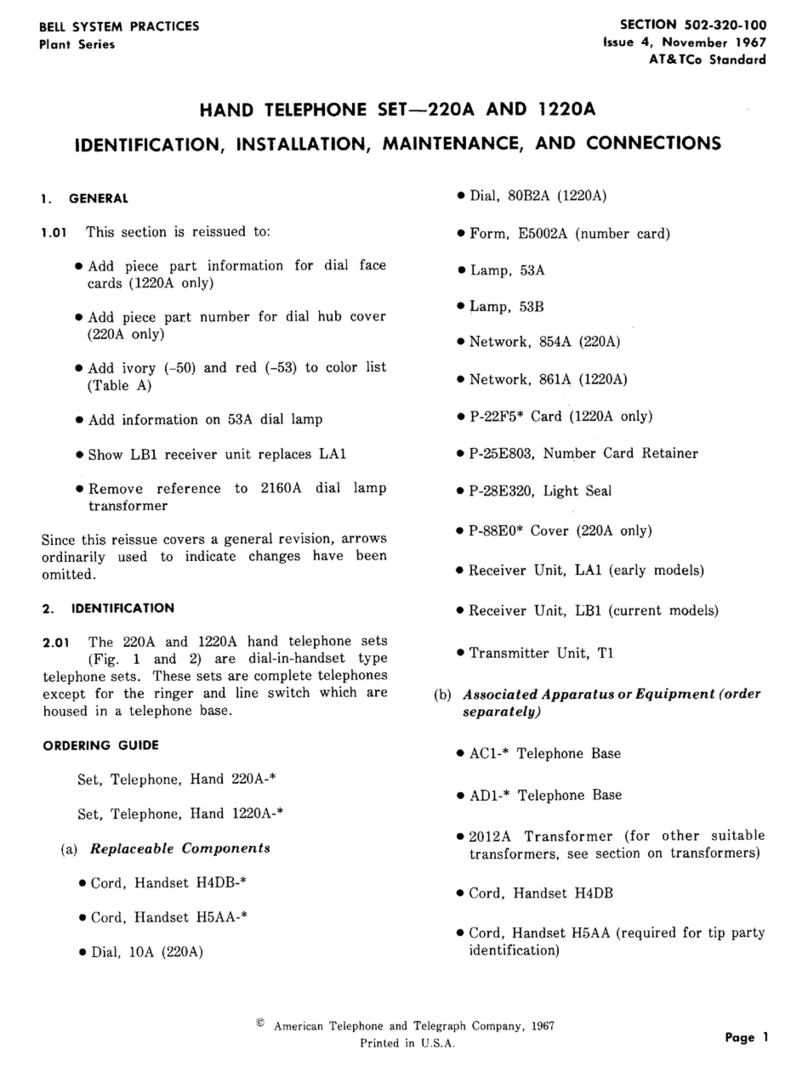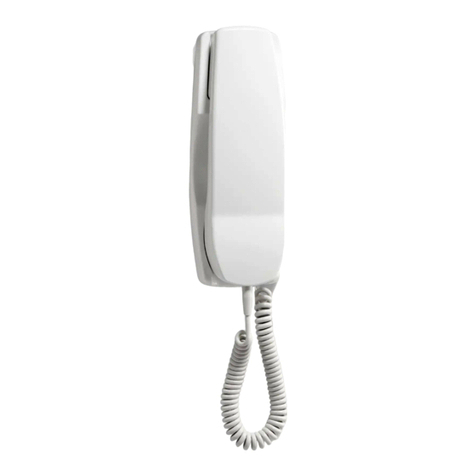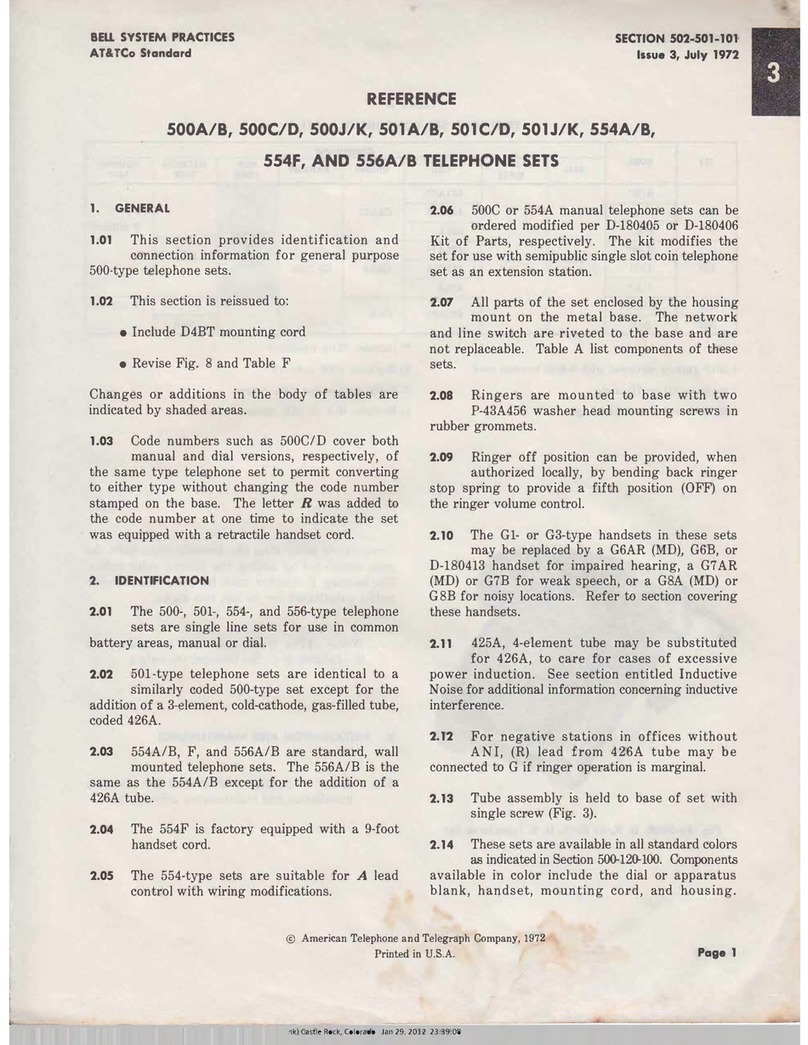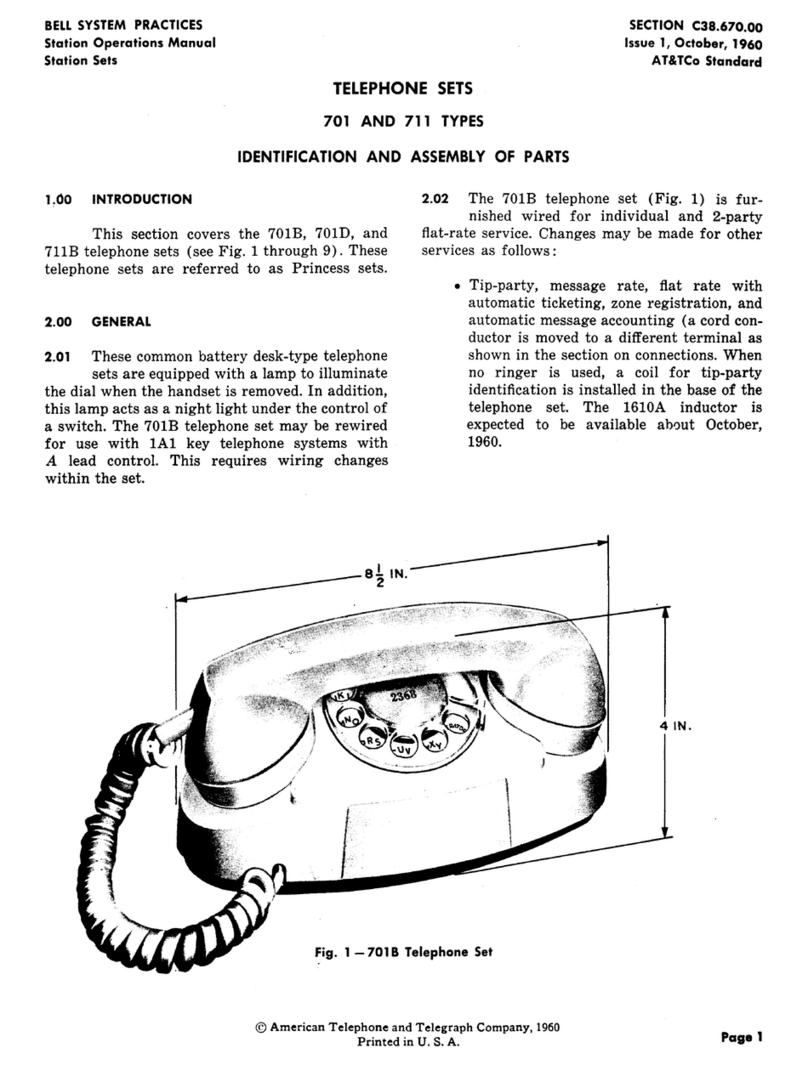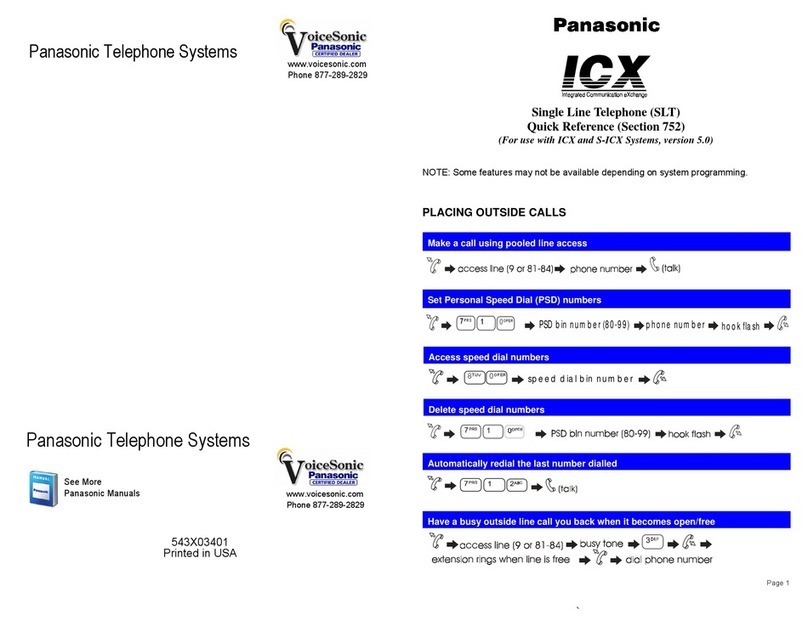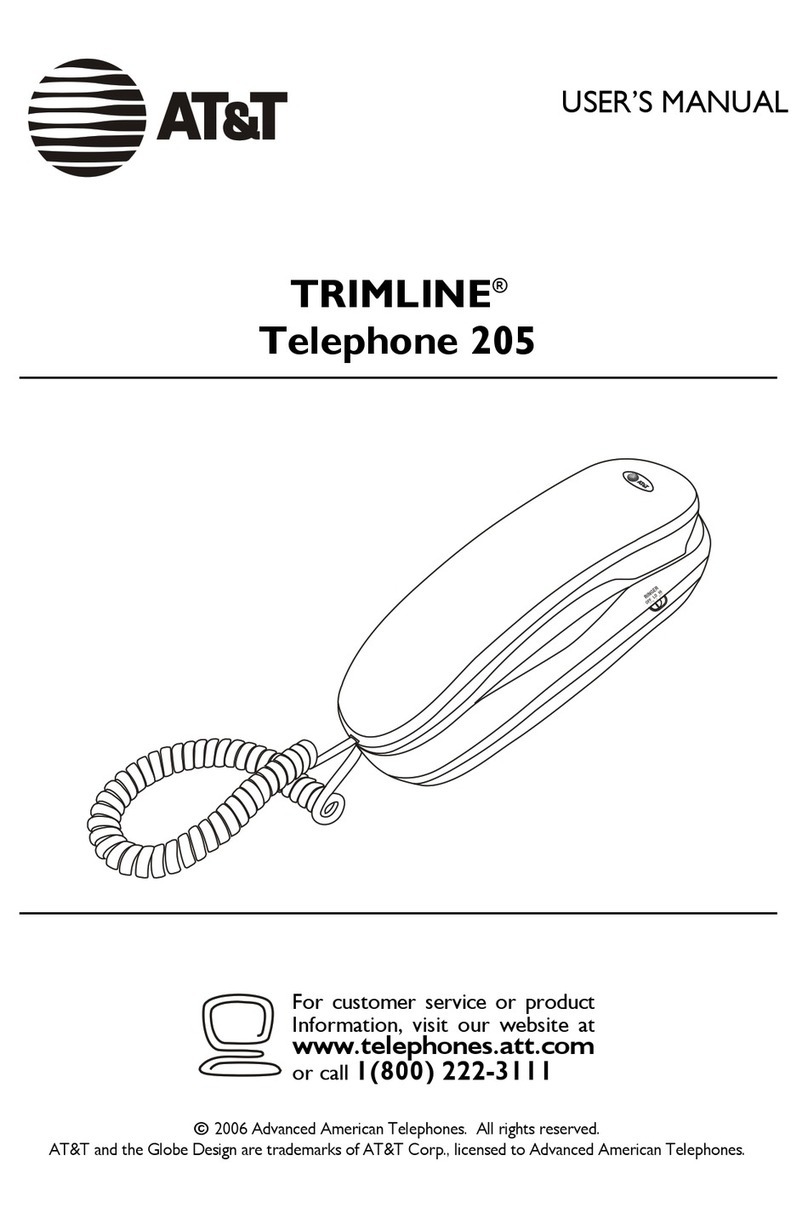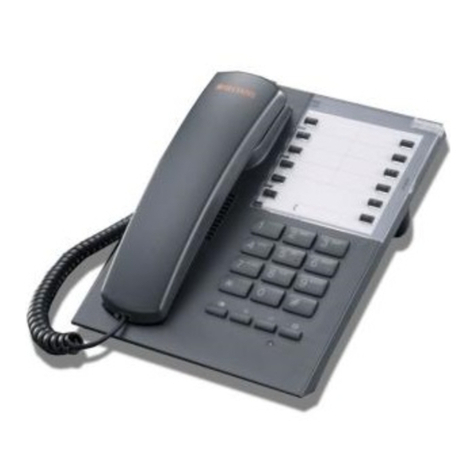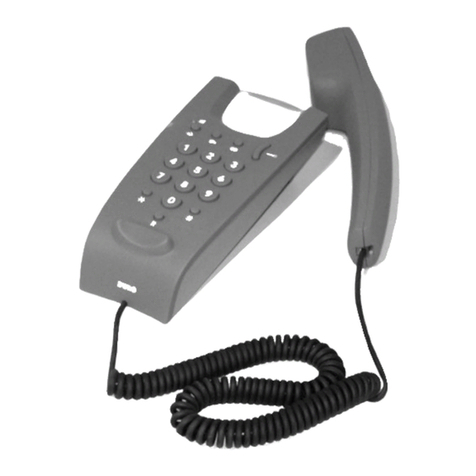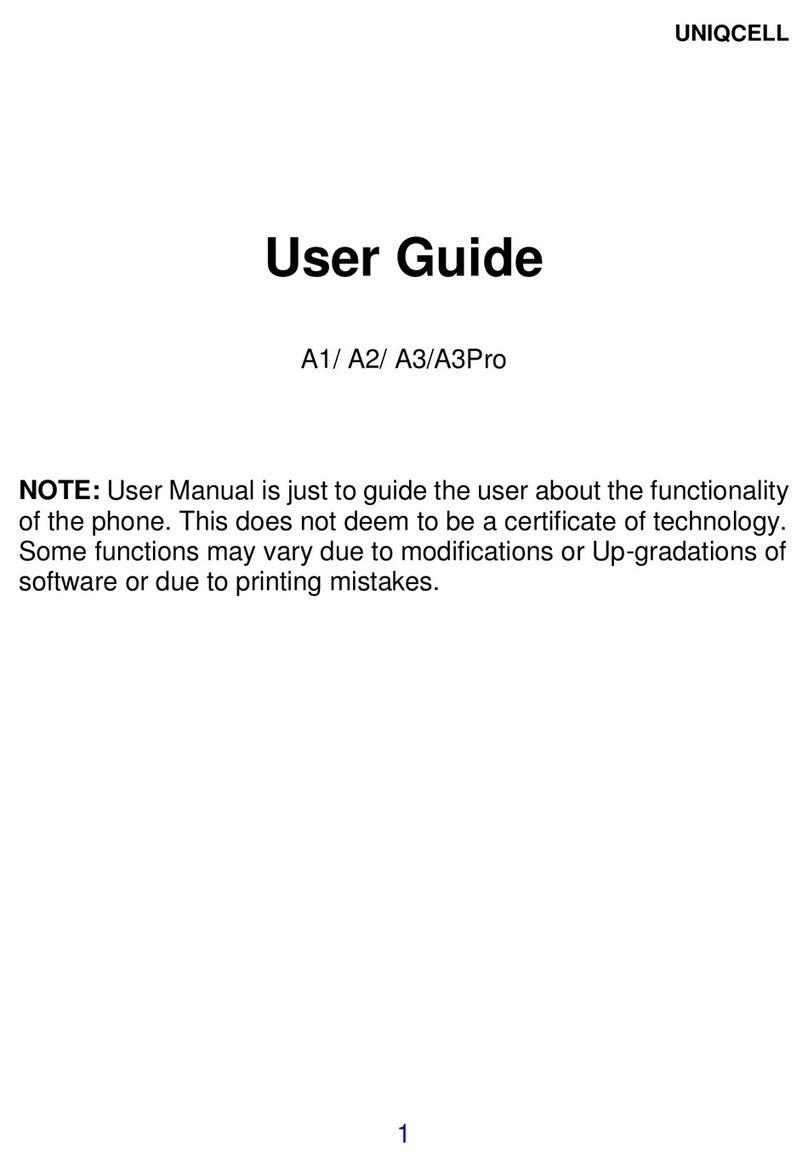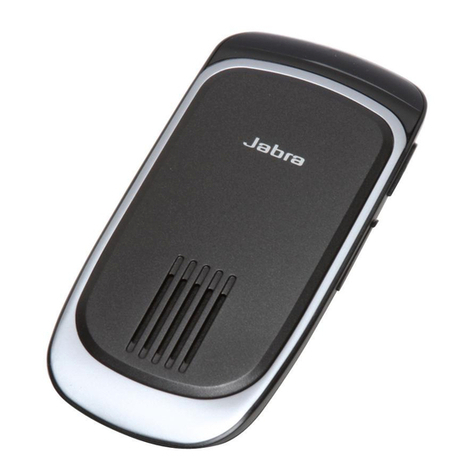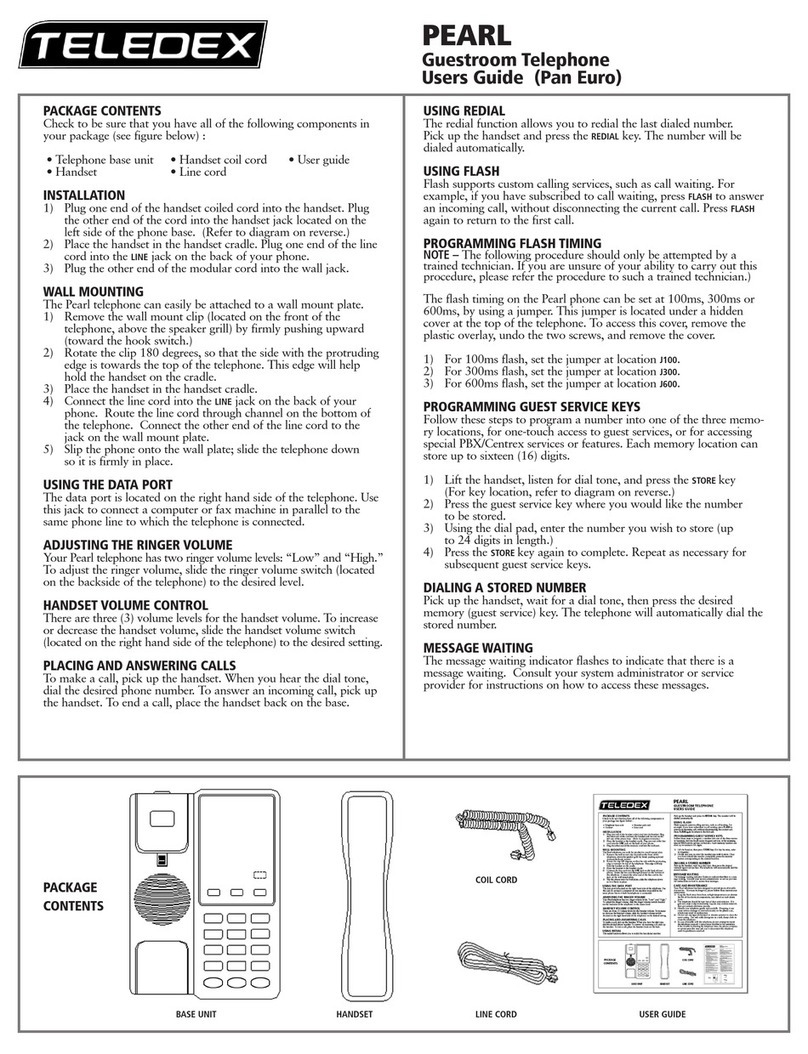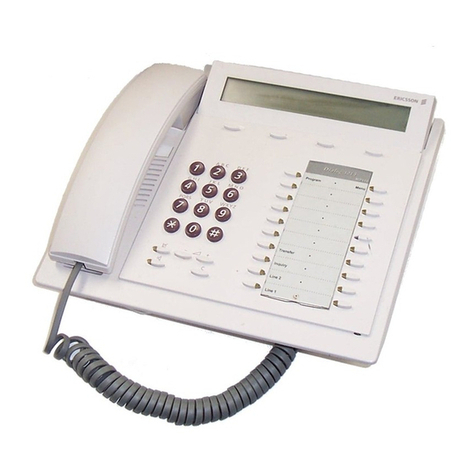MOUNTINGCORO ENTRANCEFOR5000A OIAL
~~:~::’=1 \ ,
STRAIN RELIEF MOUNlING CARD
623E4
JACK>
$WTIJ:
FOR
HOLOING
UPPER
HOUSING
\
P
VOLUME
CONTROL
FOR CALI
PRoGRESS
SOUNOER
1i\ /
o0
‘b
o0
L
Fig. 3—Bottom of 510OAM Transaction II Telephone
Base Showing Upper Housing Screws and
Mounting Cord Jack
or fuses may be open. If fuses are suspected,
refer to 4.02 in Maintenance section.
PRELIMINARY TEST PROCEDURE
3.13 Go off-hook by lifting handset; first and
fourth instruction lamps will light. Replace
the handset; both lamps will extinguish. Press
the ON button; both lamps will light again. Run
test card B(card is packed with the 51OOAM base)
through the card reader from right to left. Card
must be held with the magnetic stripe down and
to the front and must be moved through the slot
smoothly and without hesitation. First instruction
lamp should go out and second instruction lamp
should light. Correct operation of these lamps
indicates that the test card is properly coded and
the card reader is good. If the card is not read
correctly the first lamp will blink and the card
reading procedure should be repeated. Press the
OFF button; both lamps will extinguish.
INSTALLATION TEST
1SS 1, SECTION 502-323-401
PROCEDURES
3.14 Using the TRIMLINE handset, perform the
normal tests, including ringback, for arotary
or TOUCH-TONE telephone set (as applicable)
according to local procedures.
3.15 Depress ON button (listen to dial tone), and
check operation of call progress tone sounder
volume control (Fig. 1). Adjust volume control to
acceptable level and depress OFF button.
REMOTE TEST PROCEDURE
!!lr
In the following tests there must not
be over a10-second delay between
!steps or the test line will interpret
this as an error.
3.16
Note: If an interrupted (1/2 second on, 1/2
second off), lasting about 5seconds, is heard
at any time, an error is indicated. The 1A
Transaction Telephone Test Line Station
(TTTLS) will disconnect at the end of the
interrupted tone. To retest, it will be necessary
to redial the test line (3.16) through (3.22).
Go off-hook by lifting the handset, first
and fourth instruction iamps are lighted and
dial tone is heard. (The fourth instruction lamp
will remain lighted as long as the set is off-hook.)
Manually dial the number of the 1A Transaction
Telephone Test Line Station (TTTLS) using the
TRIMLINE handset.
3.17 When the call is completed to the TTTLS,
it will respond with a3-second answer tone
which will be heard on the TRIMLINE handset.
After the answer tone has terminated, the test
card should be passed through the reader two (2)
times. The instruction lamps should sequence–the
second instruction lamp should light after the card
is passed through the first time, and when the
card has been passed through the second time,
the third lamp will be lighted.
3.18 Key in digits by depressing buttons on the
manual entry pad, in sequence, 1through
9, ●,O, /, and END. The third instruction lamp
will now be extinguished. While you are doing
this, the set will transmit the buffered data as
TOUCH-TONE pulses. The digits keyed in will
have appeared on the visual display as they are
Page 7

